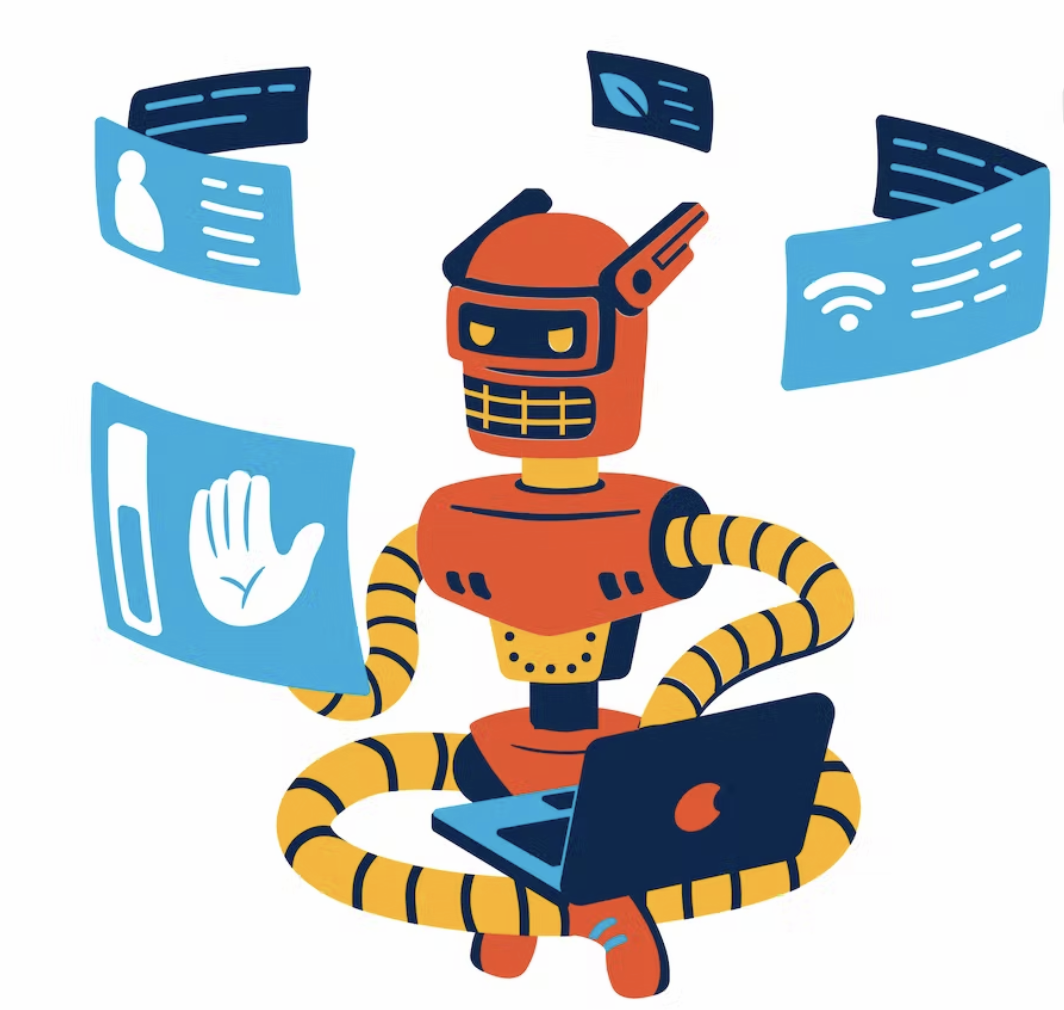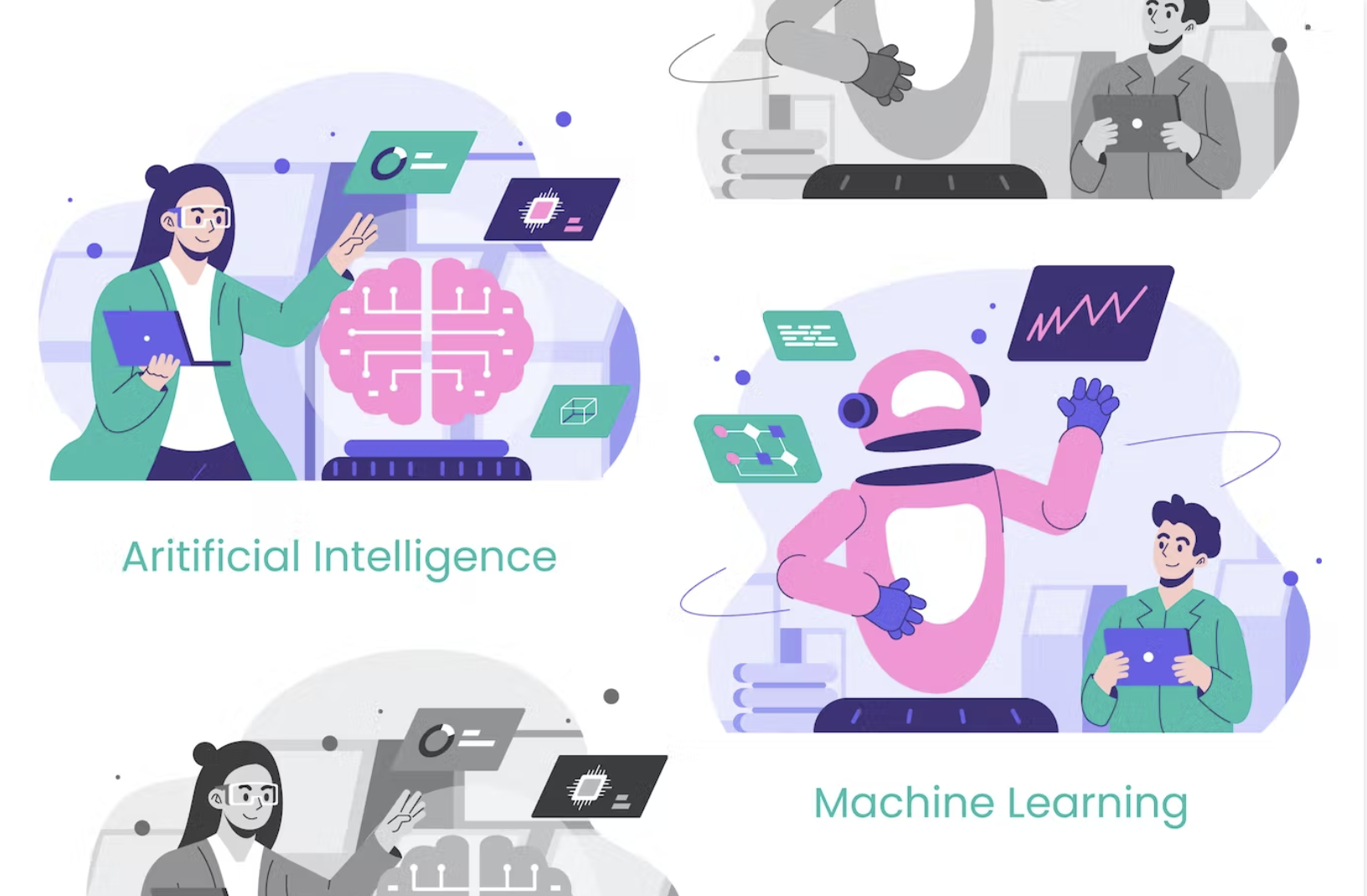Software developer is one of the highest paying job in USA. You can earn 80k to 220k yearly. As a software engineer, you possess the versatility and adaptability of a Swiss Army knife, capable of tackling a diverse array of tasks, from modern application development in JavaScript to designing and implementing PHP web applications. Your success in this field hinges on your ability to innovate, solve problems, and exceed client expectations.

Creating a compelling software engineer resume is crucial to landing your dream job. Just as you meticulously design software to function flawlessly, your resume should be crafted with the same attention to detail and precision, ensuring it effectively showcases your skills, experience, and accomplishments.
In this comprehensive guide, we’ll walk you through the key steps to create a software engineer resume that stands out, using VioResume’s professional templates and tools.
1. Highlight Your Versatile Experience
Your resume should reflect the wide range of skills and experiences you bring to the table as a software engineer. Whether your expertise lies in programming languages, web development, or software development methodologies, it’s essential to detail your unique experiences in each area.
Example: “Proficient in multiple programming languages, including Python, JavaScript, and C++, with extensive experience in both front-end and back-end development. Developed and deployed scalable web applications using modern frameworks like React and Node.js, improving user engagement by 30%.”
By detailing your technical skills and achievements in each area, you demonstrate your adaptability and readiness to tackle diverse challenges.
2. Summarise Your Career Achievements
In the competitive field of software engineering, it’s vital to showcase the tangible results of your work. Summarising your career achievements in a way that highlights your ability to deliver scalable and robust software solutions is key.
Example: “Spearheaded a £10 million software development project, resulting in a 25% increase in operational efficiency and a 15% reduction in costs. Successfully led the migration of a legacy system to a cloud-based platform, enhancing system reliability and scalability.”
Quantifying your accomplishments with specific figures and outcomes makes your contributions clear and impressive.
3. Emphasise Relevant Certifications
Certifications from recognised bootcamps or specialised courses can significantly boost your resume, especially when applying for roles that require specific technical expertise. Highlight any certifications you’ve earned in areas like AWS, Azure, or cybersecurity.
Example: “Certified AWS Solutions Architect with a deep understanding of cloud infrastructure and services. Completed advanced courses in Azure DevOps, contributing to the successful deployment of cloud-based applications.”
These certifications demonstrate your commitment to continuous learning and staying updated with the latest industry trends.
4. Use an Organised and Readable Format
Just as you would write clean, efficient code, your resume should be formatted for clarity and readability. The way you structure your resume can significantly impact how a hiring manager perceives your qualifications.
Reverse Chronological Format
A reverse chronological format, where your most recent experience is listed first, is ideal for showcasing your career progression. This format allows employers to see your current skills and responsibilities upfront.
Header and Contact Information
The header of your resume should include essential contact information, such as your name, phone number, email, and location. Including links to your portfolio, GitHub, or LinkedIn profile can also provide employers with a more comprehensive view of your work.
Length and File Format
While there’s no hard-and-fast rule for resume length, it’s generally recommended to keep your resume to one page if you have less than 10 years of experience. For those with more extensive experience, a two-page resume may be necessary. Always submit your resume in PDF format to ensure that the formatting remains consistent across different devices.
5. Key Sections to Include
When crafting your software engineer resume, be sure to include the following sections:
Resume Summary
Your resume summary is your opportunity to briefly introduce yourself and your career objectives. It should be concise—typically between two to four sentences—and focus on your key skills and what you bring to the role.
Example: “Experienced software engineer with over seven years of expertise in developing high-performance applications and scalable systems. Passionate about leveraging cutting-edge technologies to solve complex problems and improve user experiences.”
Experience
This section is likely the most scrutinised part of your resume, so include only the most relevant work experience. Use bullet points to detail your responsibilities and achievements in each role, focusing on the impact you made.
Example: “Led a team of five engineers in the development of a microservices architecture, reducing system response times by 40% and improving user satisfaction by 20%.”
Education
Your education section is particularly important in the IT field. If you’ve attended a prestigious university or completed a specialised program, be sure to highlight this.
Example: “Bachelor of Science in Computer Science, University of Oxford, 2012-2016. Graduated with First Class Honours.”
Skills Section
The skills section of your resume is your chance to showcase the technical competencies that make you an ideal candidate. List your most relevant programming languages, frameworks, tools, and technologies.
Example: “Proficient in JavaScript, Python, SQL, React, Node.js, and cloud platforms such as AWS and Azure.”
Certifications, Licenses, and Awards
Including unique certifications can help you stand out in a crowded field. If you hold certifications such as AWS Certified Solutions Architect or Microsoft Certified: Azure Developer, be sure to include them.
Example: “Certified Kubernetes Administrator (CKA), Linux Foundation, 2020.”
6. What Hiring Managers Want to See
Hiring managers look for candidates who not only possess strong technical skills but also bring value to the company. Here’s what they’re typically looking for:
Technical Skills
Recruiters want to see a deep understanding of programming languages, frameworks, and technologies. Demonstrating your proficiency in widely used languages like JavaScript, Python, and SQL, as well as your experience with modern development tools, is crucial.
Projects and Contributions
Software engineering is a creative field, and showcasing your contributions to significant projects can help you stand out. Describe your role, the technologies used, and the impact of your work.
Example: “Developed a real-time analytics platform that processed over 1 million transactions per second, enhancing decision-making capabilities for clients.”
GitHub or Portfolio
Providing a link to your GitHub profile or online portfolio allows hiring managers to see your code and projects firsthand. This can be a powerful supplement to your resume.
Ability to Collaborate
Software engineers often work across multiple teams within a company. Highlight your ability to collaborate effectively with others, using real-world examples to demonstrate your teamwork skills.
Example: “Collaborated with product and design teams to deliver a seamless user experience, resulting in a 25% increase in customer retention.”
7. Writing Your Experience Section
Your experience section should be detailed and include quantifiable examples of your achievements. Here’s how to effectively structure this section:
Good Example:
_”Software Engineer, ABC Tech, London, May 2021 – Present
- Led a team of engineers to implement Agile methodologies, increasing project efficiency by 20%.
- Designed and developed a microservices architecture using Node.js, improving application response times by 30%._”
This example uses strong action verbs and quantifiable results to demonstrate the candidate’s impact.
Poor Example:
_”Software Engineer, XYZ Corp, London, May 2021 – Present
- Helped implement Agile methodologies.
- Worked on developing microservices architecture._”
This example lacks specific details and quantifiable results, making it less impactful.
8. Quantifying Your Impact
Quantifying your impact is crucial for demonstrating the value you’ve brought to previous roles. Use the Problem-Action-Result (PAR) method to structure your achievements.
Example: “Reduced system downtime by 40% by identifying and resolving critical issues in the database architecture.”
9. Listing Hard and Soft Skills
In the IT field, it’s important to balance technical and soft skills. While technical skills are essential, soft skills like communication and teamwork are also highly valued.
Top Hard Skills:
- Programming Languages: Java, Python, JavaScript
- Web Development: React, Angular, Node.js
- Database Management: SQL, MongoDB
- Version Control: Git, GitHub
Top Soft Skills:
- Problem-Solving
- Teamwork
- Attention to Detail
- Leadership
- Adaptability
10. Certifications and Education
List your certifications and education clearly, including the name of the institution, degree, and dates attended. If you have certifications, include the title, issuing organisation, and the date of acquisition.
Example: “AWS Certified Solutions Architect, Amazon Web Services, 2021”
11. Writing a Resume Summary or Objective
A resume summary or objective helps set the tone for your resume. While a summary is more detailed and suited for experienced professionals, an objective is more concise and ideal for those with less experience.
Example Summary: “Experienced software engineer with a proven track record of developing scalable applications and improving system performance. Eager to contribute to the growth and success of [Company Name].”
Example Objective: “Recent computer science graduate with a strong foundation in software development and a passion for problem-solving. Seeking to leverage my skills in a dynamic team environment at [Company Name].”
12. Final Tips for a Winning Software Engineer Resume
- Tailor Each Application: Customise your resume for each job to match the specific requirements listed in the job description.
- Use Action Verbs: Start each bullet point with a strong action verb to make your accomplishments stand out.
Front-End vs. Back-End Developer Resumes: Key Differences and How to Tailor Yours
When crafting a resume as a front-end or back-end developer, it’s essential to highlight the specific skills and experiences relevant to each role. Although both positions require technical expertise in web development, the focus areas, tools, and frameworks differ significantly.
1. Focus Areas and Skills
Front-End Developer Resumes:
- Visual Design: Emphasize your ability to create intuitive, user-friendly interfaces. Highlight skills in HTML, CSS, JavaScript, and front-end frameworks like React, Angular, or Vue.js. Experience with responsive design, cross-browser compatibility, and UI/UX principles is crucial.
- Performance Optimization: Showcase your experience in optimizing page load times, using tools like Lighthouse or Webpack to improve user experience.
- Collaboration with Designers: If you’ve worked closely with UX/UI designers, mention your ability to translate design mockups into functional, interactive web pages.
Back-End Developer Resumes:
- Server-Side Logic: Focus on your expertise in building and maintaining the server-side logic that powers applications. Highlight your knowledge of programming languages like Python, Ruby, Java, or Node.js, along with your experience in working with databases (SQL, NoSQL).
- API Development: Demonstrate your experience in developing RESTful APIs, integrating third-party services, and managing data flow between the front end and back end.
- Security and Scalability: Emphasize your skills in ensuring data security, managing authentication and authorization, and designing scalable architectures to handle large amounts of data or traffic.
2. Technical Tools and Frameworks
Front-End Developer Resumes:
- JavaScript Frameworks: Proficiency in React, Angular, or Vue.js is often a must. Include examples of projects where you’ve used these tools to build complex, dynamic web applications.
- CSS Preprocessors and Frameworks: Mention your experience with Sass, Less, Bootstrap, or Tailwind CSS, as well as your ability to create maintainable and reusable styles.
- Version Control: Experience with Git is essential. Highlight any contributions to open-source projects or collaboration on GitHub repositories.
Back-End Developer Resumes:
- Programming Languages: Highlight your proficiency in server-side languages like Python, Ruby, Java, or PHP. Include examples where you’ve built or maintained back-end systems using these languages.
- Database Management: Emphasize your experience with relational databases (MySQL, PostgreSQL) or NoSQL databases (MongoDB, Redis). Mention any experience with database optimization or migration.
- DevOps and CI/CD: If you’ve worked with DevOps tools (Docker, Kubernetes) or continuous integration/continuous deployment (CI/CD) pipelines, include these to show your ability to streamline the development process.
3. Project Experience and Impact
Both front-end and back-end developers should use their resumes to showcase how their work has impacted past projects or companies. Use quantifiable achievements to highlight your contributions.
Front-End Developer Example: “Developed a responsive e-commerce platform using React and Bootstrap, resulting in a 20% increase in mobile traffic and a 15% reduction in bounce rates.”
Back-End Developer Example: “Designed and implemented a scalable API for a high-traffic web application, reducing server response time by 30% and improving user satisfaction.”
4. Soft Skills and Collaboration
While technical skills are crucial, soft skills are also important, especially in roles that require collaboration between front-end and back-end teams.
Front-End Developer Resumes:
- Communication: Highlight your ability to effectively communicate with designers, product managers, and back-end developers to ensure that the final product meets user needs.
- Creativity: Emphasize your problem-solving skills and creativity in designing user-centric interfaces.
Back-End Developer Resumes:
- Problem-Solving: Showcase your ability to troubleshoot and optimize complex systems, ensuring seamless integration between the front and back ends.
- Collaboration: Mention your experience working with front-end developers to align server-side logic with the user interface.
5. Education and Certifications
While both front-end and back-end roles often require a solid foundation in computer science, specific certifications can enhance your resume.
Front-End Developer Resumes:
- Certifications: Consider including certifications in front-end technologies, such as Google’s Mobile Web Specialist or certifications from courses on platforms like Coursera or Udemy.
Back-End Developer Resumes:
- Certifications: Certifications in cloud computing (AWS Certified Solutions Architect), database management (Oracle Certified Professional), or security (Certified Ethical Hacker) can make your resume stand out.
As a software engineer, you possess a unique blend of adaptability and technical prowess, much like a Swiss Army knife, capable of tackling a wide range of challenges, from developing modern applications with JavaScript to designing and implementing robust PHP web applications. Your success in this field depends heavily on your ability to innovate and meet the diverse needs of your clients.
Creating a compelling software engineer resume is essential to securing your dream job. Just as you would meticulously craft software to function seamlessly, your resume should be designed with precision and attention to detail, ensuring that it effectively showcases your skills, experience, and accomplishments.
In this comprehensive guide, we’ll walk you through the key steps to creating a software engineer resume that stands out, using VioResume’s professional templates and tools.
1. Highlight Your Versatile Experience
Your resume should reflect the wide range of skills and experiences you bring to the table as a software engineer. Whether your expertise lies in programming languages, web development, or software development methodologies, it’s essential to detail your unique experiences in each area.
Example:
“Proficient in multiple programming languages, including Python, JavaScript, and C++, with extensive experience in both front-end and back-end development. Developed and deployed scalable web applications using modern frameworks like React and Node.js, improving user engagement by 30%.”
By detailing your technical skills and achievements in each area, you demonstrate your adaptability and readiness to tackle diverse challenges.
2. Summarise Your Career Achievements
In the competitive field of software engineering, it’s vital to showcase the tangible results of your work. Summarising your career achievements in a way that highlights your ability to deliver scalable and robust software solutions is key.
Example:
“Spearheaded a £10 million software development project, resulting in a 25% increase in operational efficiency and a 15% reduction in costs. Successfully led the migration of a legacy system to a cloud-based platform, enhancing system reliability and scalability.”
Quantifying your accomplishments with specific figures and outcomes makes your contributions clear and impressive.
3. Emphasise Relevant Certifications
Certifications from recognised bootcamps or specialised courses can significantly boost your resume, especially when applying for roles that require specific technical expertise. Highlight any certifications you’ve earned in areas like AWS, Azure, or cybersecurity.
Example:
“Certified AWS Solutions Architect with a deep understanding of cloud infrastructure and services. Completed advanced courses in Azure DevOps, contributing to the successful deployment of cloud-based applications.”
These certifications demonstrate your commitment to continuous learning and staying updated with the latest industry trends.
4. Use an Organised and Readable Format
Just as you would write clean, efficient code, your resume should be formatted for clarity and readability. The way you structure your resume can significantly impact how a hiring manager perceives your qualifications.
Reverse Chronological Format
A reverse chronological format, where your most recent experience is listed first, is ideal for showcasing your career progression. This format allows employers to see your current skills and responsibilities upfront.
Header and Contact Information
The header of your resume should include essential contact information, such as your name, phone number, email, and location. Including links to your portfolio, GitHub, or LinkedIn profile can also provide employers with a more comprehensive view of your work.
Length and File Format
While there’s no hard-and-fast rule for resume length, it’s generally recommended to keep your resume to one page if you have less than 10 years of experience. For those with more extensive experience, a two-page resume may be necessary. Always submit your resume in PDF format to ensure that the formatting remains consistent across different devices.
5. Key Sections to Include
When crafting your software engineer resume, be sure to include the following sections:
Resume Summary
Your resume summary is your opportunity to briefly introduce yourself and your career objectives. It should be concise—typically between two to four sentences—and focus on your key skills and what you bring to the role.
Example:
“Experienced software engineer with over seven years of expertise in developing high-performance applications and scalable systems. Passionate about leveraging cutting-edge technologies to solve complex problems and improve user experiences.”
Experience
This section is likely the most scrutinised part of your resume, so include only the most relevant work experience. Use bullet points to detail your responsibilities and achievements in each role, focusing on the impact you made.
Example:
“Led a team of five engineers in the development of a microservices architecture, reducing system response times by 40% and improving user satisfaction by 20%.”
Education
Your education section is particularly important in the IT field. If you’ve attended a prestigious university or completed a specialised program, be sure to highlight this.
Example:
“Bachelor of Science in Computer Science, University of Oxford, 2012-2016. Graduated with First Class Honours.”
Skills Section
The skills section of your resume is your chance to showcase the technical competencies that make you an ideal candidate. List your most relevant programming languages, frameworks, tools, and technologies.
Example:
“Proficient in JavaScript, Python, SQL, React, Node.js, and cloud platforms such as AWS and Azure.”
Certifications, Licenses, and Awards
Including unique certifications can help you stand out in a crowded field. If you hold certifications such as AWS Certified Solutions Architect or Microsoft Certified: Azure Developer, be sure to include them.
Example:
“Certified Kubernetes Administrator (CKA), Linux Foundation, 2020.”
6. What Hiring Managers Want to See
Hiring managers look for candidates who not only possess strong technical skills but also bring value to the company. Here’s what they’re typically looking for:
Technical Skills
Recruiters want to see a deep understanding of programming languages, frameworks, and technologies. Demonstrating your proficiency in widely used languages like JavaScript, Python, and SQL, as well as your experience with modern development tools, is crucial.
Projects and Contributions
Software engineering is a creative field, and showcasing your contributions to significant projects can help you stand out. Describe your role, the technologies used, and the impact of your work.
Example:
“Developed a real-time analytics platform that processed over 1 million transactions per second, enhancing decision-making capabilities for clients.”
GitHub or Portfolio
Providing a link to your GitHub profile or online portfolio allows hiring managers to see your code and projects firsthand. This can be a powerful supplement to your resume.
Ability to Collaborate
Software engineers often work across multiple teams within a company. Highlight your ability to collaborate effectively with others, using real-world examples to demonstrate your teamwork skills.
Example:
“Collaborated with product and design teams to deliver a seamless user experience, resulting in a 25% increase in customer retention.”
7. Writing Your Experience Section
Your experience section should be detailed and include quantifiable examples of your achievements. Here’s how to effectively structure this section:
Good Example:
_”Software Engineer, ABC Tech, London, May 2021 – Present
- Led a team of engineers to implement Agile methodologies, increasing project efficiency by 20%.
- Designed and developed a microservices architecture using Node.js, improving application response times by 30%._”
This example uses strong action verbs and quantifiable results to demonstrate the candidate’s impact.
Poor Example:
_”Software Engineer, XYZ Corp, London, May 2021 – Present
- Helped implement Agile methodologies.
- Worked on developing microservices architecture._”
This example lacks specific details and quantifiable results, making it less impactful.
8. Quantifying Your Impact
Quantifying your impact is crucial for demonstrating the value you’ve brought to previous roles. Use the Problem-Action-Result (PAR) method to structure your achievements.
Example:
“Reduced system downtime by 40% by identifying and resolving critical issues in the database architecture.”
9. Listing Hard and Soft Skills
In the IT field, it’s important to balance technical and soft skills. While technical skills are essential, soft skills like communication and teamwork are also highly valued.
Top Hard Skills:
- Programming Languages: Java, Python, JavaScript
- Web Development: React, Angular, Node.js
- Database Management: SQL, MongoDB
- Version Control: Git, GitHub
Top Soft Skills:
- Problem-Solving
- Teamwork
- Attention to Detail
- Leadership
- Adaptability
10. Certifications and Education
List your certifications and education clearly, including the name of the institution, degree, and dates attended. If you have certifications, include the title, issuing organisation, and the date of acquisition.
Example:
“AWS Certified Solutions Architect, Amazon Web Services, 2021”
11. Writing a Resume Summary or Objective
A resume summary or objective helps set the tone for your resume. While a summary is more detailed and suited for experienced professionals, an objective is more concise and ideal for those with less experience.
Example Summary:
“Experienced software engineer with a proven track record of developing scalable applications and improving system performance. Eager to contribute to the growth and success of [Company Name].”
Example Objective:
“Recent computer science graduate with a strong foundation in software development and a passion for problem-solving. Seeking to leverage my skills in a dynamic team environment at [Company Name].”
12. Final Tips for a Winning Software Engineer Resume
- Tailor Each Application: Customise your resume for each job to match the specific requirements listed in the job description.
- Use Action Verbs: Start each bullet point with a strong action verb to make your accomplishments standTo craft an outstanding software engineer resume in a British tone, you need to emphasize your versatile experience, quantify your achievements, and showcase your certifications using VioResume templates. Begin by highlighting your broad skill set in programming, web development, and software methodologies. Use specific examples, like leading projects that enhanced system efficiency or implementing scalable architectures. Incorporate certifications from recognised institutions, like AWS or Azure, and ensure your resume is well-structured, using a reverse chronological format. Additionally, balance technical skills with soft skills, such as collaboration and problem-solving. Customise your resume for each application, using action-oriented language to convey your impact effectively.










